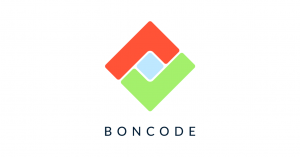Migrating custom software to the cloud is rarely straightforward. If you’re not careful, moving code can trigger multiple issues that impact your business-critical systems.
You have two options for migration. One, you opt for lift and shift – simply moving to the cloud with as little cost and risk as possible. But we think that’s a missed opportunity. We’re fans of option two: lift, refactor, and shift.
Taking a combined approach, migrating and refactoring helps to eliminate technical debt. Here’s why that could be a winning combination for your business.
What is refactoring?
Refactoring is the process of restructuring existing source code to improve its internal structure, readability, maintainability, and performance. It involves making strategic modifications to the codebase so it’s easier to understand, modify, and extend in the future.
The process begins with a strategic analysis – partly manual, partly automated – to ascertain where there is technical debt in the source code. This helps to identify where the system needs work for functional reasons, and where there are potential ‘quick wins’.
Refactoring source code is the software development equivalent of renovating a house or car, removing outdated features, and polishing up what’s already there, and worth keeping.
Why refactor custom code?
There are two key reasons to refactor custom source code. First, it can help reduce the overall size of your codebase by removing duplicate and obsolete code. A smaller system is much easier to maintain and adapt. Second, it helps reduce the complexity of your code by simplifying it, improving code quality, and enhancing its reusability.
If you’re preparing to migrate custom software to the cloud, it’s actually the perfect moment to assess your existing software architecture and refactor it for maintainability. That’s because there’s already a need to assess and adjust the architecture to make sure it’s cloud-ready. If you’re getting code ready for the cloud, why not improve its maintainability at the same time?
The fact is that not all custom code is ready to migrate to the cloud. In many cases, lift and shift isn’t an option. And, even if that approach might work for your code, it comes loaded with risk to business-critical systems.
Entering into cloud migration – without proper oversight over your existing codebase for mission-critical systems – is a dangerous game. From a risk management and business continuity perspective, you need to understand the risks, in order to mitigate unforeseen and extended interruptions to your services.
Refactoring and migrating together is the only sensible choice. That’s because software built to run on a specific platform will perform well and be easier to maintain over time.
Cloud-readiness plus long-term maintainability
The moment of migration to the cloud is an ideal opportunity to optimize your existing codebase for future maintainability through refactoring. You need to analyze your code for cloud readiness, so why not analyze it to remove technical debt at the same time? One analysis effort, two objectives served. Not to mention that if you do refactor and migrate to the cloud in one effort, you can combine the necessary tests. Again, one test effort, two objectives served.
The challenge is how to get the oversight needed to identify where to direct resources. BonCode’s tool-based consultancy for software quality gives you fact-based insights into your custom source code. So everyone in your organization – from the C-suite to your developers – can see what needs to be refactored to improve software quality. These insights can then feed into your development roadmap.
There’s no doubt that removing technical debt is a great way to cut costs. You can test once and gain twice – once for the migration and twice for maintainability. In effect, refactoring brings added value to the cloud migration process.
If you’re preparing to migrate custom code to the cloud, then BonCode can deliver insights into software quality that help optimize your refactoring efforts. Contact us





